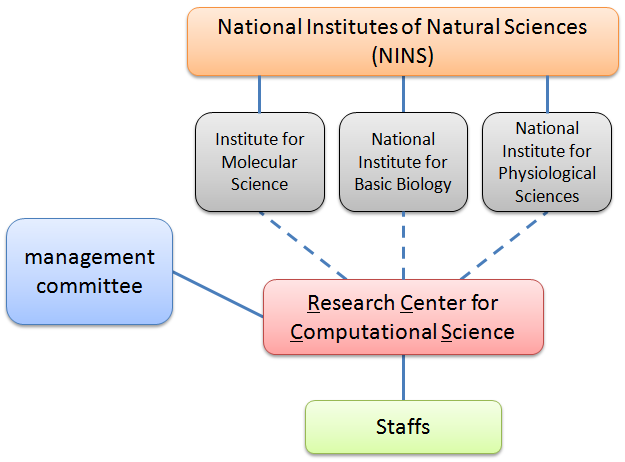History and Mission
The Computer Center of IMS, which was the forerunner of the Research Center for Computational Science, was established in May, 1977, primarily in order to provide an opportunity for large scale computation in molecular science which could not be carried out at regional university computer centers. Further, the Center supported experimental data collection and analysis, developed and maintained the program library and database in molecular science, and provided the computational service to neighboring National Institute for Basic Biology and National Institute for Physiological Sciences.
In April, 2000, the Center was reorganized into the Research Center for Computational Science of the Okazaki National Research Institutes in order to extend its activity to the frontier between molecular and bio sciences. Since then, the Center has been engaged not only in the facility service but also in science, for example, development of new theory and simulation method in these fields. After April, 2005, when Okazaki National Research Institute, itself, was reorganized into the National Institute of Natural Sciences, the Center has been showing its activity as a member of Okazaki Research Facilities.
The Center made a major contribution to the project, "Grid Application Research in Nanoscience", by IMS as a grid computer center, which was a part of the activity of the national project, "National Research Grid Initiative(NAREGI)", by MEXT, Japan, from 2003 to 2005. Now, the Center is working for the project, "Development of New Computational Methods for Large-Scale Systems and Establishment of Bases for Advanced Simulation of Molecular and Material Systems", by IMS forming a part of the project, "Formation of Interdisciplinary and International Bases Across Fields of Study", by NINS. The Center is playing an important role, too, in the national project, "Grand Challenge to Next Generation Nanoscience", by IMS in "Development & Application of Advanced High-Performance Supercomputer Project" by MEXT, Japan.
In May, 2013, the Center is managed and operated by two professors, one associate professors, five assistant professors, six technical staffs, and two clerical assistants.
Organization
